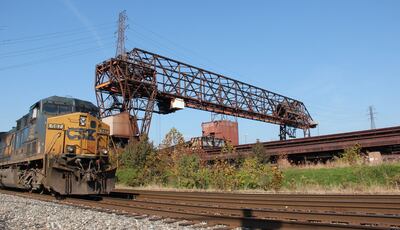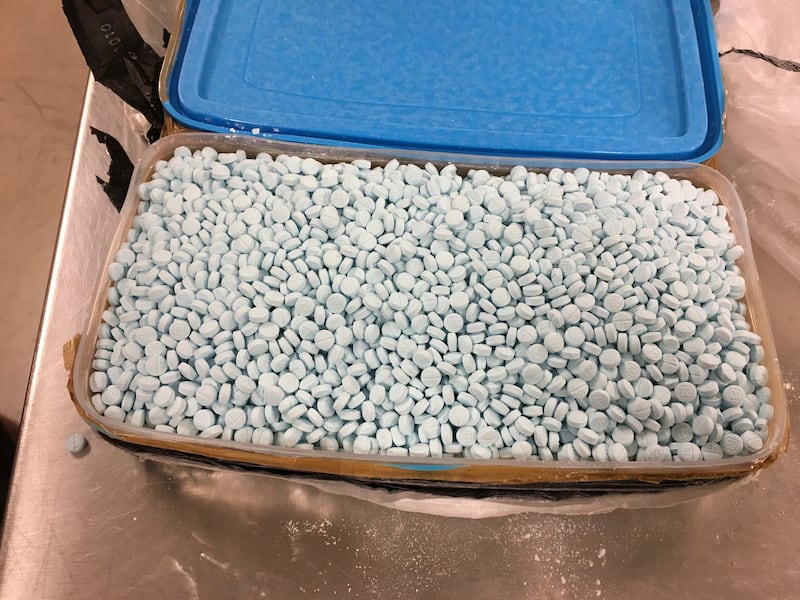The Covid-19 pandemic exacerbated another public health crisis that has plagued America for years: drug overdoses.
According to new data from the US Centres for Disease Control and Prevention (CDC), more than 107,000 Americans died from overdoses last year, which equates to a death about every five minutes.
The figures continue a disturbing trend. In 2020, overdose deaths climbed to more than 91,000 in the US — up from 70,000 the previous year. Most of the deaths are thought to have involved a powerful synthetic opioid called fentanyl.
Nowhere is this crisis more apparent than in Appalachia, a region of the country long associated with poverty and addiction.
Towns with names such as Coal Grove and Ironton hark back to a time when mining and heavy industry fuelled a bustling economy in places like Lawrence County, Ohio, where communities provided the raw materials used in the skyscrapers and bridges of New York, Chicago and beyond.
Today, most of the county's steel mills and mines have fallen silent, and many communities are now dealing with the fallout of lost jobs and addiction.
The latter has played a significant role in the life of Kathy Ross, executive director of Lawrence County Recovery, an organisation that provides addiction counselling, housing and other services for people with dependency problems.
Having lost several family members and close friends to overdoses, she was no stranger to the perils of addiction. And the disease eventually hit even closer to home.
“I was a nurse who got addicted,” she says. “I was working two jobs. If I took four [pills], I could work a 24-hour shift.”

The painkillers she was easily able to acquire from a doctor friend, included Vicodin, a prescription opioid pain reliever, and others.
“I got away with that for about a year.”
Then she ended up in prison for four years for falsifying documents. She says no one knew she was an addict until she was arrested.
“I’d never even had a speeding ticket,” she says.
“I knew that there were families like ours that had dealt with this and there was nobody to help me or my family. I was never offered treatment.”
These experiences prompted Ross to help people in the region struggling with addiction, and three years ago, she founded Lawrence County Recovery, which now helps more than 100 people.
“I probably field about 20 phone calls a day,” she says.

The state of West Virginia, a five-minute drive across the Ohio River from Coal Grove, had the highest death rate in 2018, according to the CDC, while Ohio ranked fourth in the country.
Research shows that teenagers are not using drugs in increasing numbers or amounts, but that the drugs' ingredients are far more deadly.
Last year, more than three quarters of all teenage drug fatalities involved fentanyl.
For Dr Ben Mack, the Lawrence County coroner since 2018, fentanyl is the new heroin.
“We usually have about 80 cases in the coroner’s office a year; 48 of those last year were overdoses,” he says.
“All but three of those were fentanyl-related deaths.”
In 2020, the county reported 24 overdose fatalities — half the number reported in 2021.
Fentanyl, a synthetic drug, has become the deadliest illicit drug in America.

Developed initially to help relieve pain among cancer patients, fentanyl is ravaging communities across Appalachia and beyond.
This is due in part, some believe, to prisons and law enforcement being slow to prosecute drug dealers, fearing Covid-19 outbreaks in jails.
Two milligrams of fentanyl can kill and part of the reason it is so deadly is that it is being mixed with heroin and cocaine, which are less dangerous.
“The fentanyl is really tough because it’s so concentrated that it can be shipped through the mail and some of it can be shipped from China, potentially,” Dr Mack says.
The US Drug Enforcement Agency reported that most fentanyl is manufactured in China and Mexico, and is thereafter smuggled into the US.
Its high potency means that drug cartels and manufacturers can compress it into highly concentrated, pill-size form that makes detection extremely difficult.
People like Ross are left to deal with the consequences in a part of America already struggling to cope with poverty and inequality, exacerbated by widespread job losses caused by the Covid-19 pandemic.
The assistance Lawrence County Recovery provides includes housing at a discounted rate of $100 per month once a person secures a job, in addition to transport to and from work or school.

“A lot of people don’t have a place to go to,” says Ross, whose organisation employs 78 people.
“We never meant to have more than 12 people working [but] the need is just there.”
She says she has worked with people between 15 and 70 years old.
Dr Mack has also observed a broad age range when it comes to overdose deaths.
The average age of death is 45, he says, which may sound a little old, “but I think it’s because older people don’t have the reserve to tolerate much of an overdose … and younger people might be doing drugs together and have Narcan available, while older folks are trying to keep it hidden — they’re doing it alone”.
Naloxone, sold as Narcan, is a “rescue drug” that reverses the effects of an opioid overdose if administered in time.
Ross and Dr Mack say it should be more readily available in their Appalachian communities, where treatment and services are in short supply and where a conservative culture still considers addiction as an issue of personal failure rather than an illness.
“We have a local government saying, ‘we don’t want you here, we don’t need you’,” Ross says.
“Well, either the government wants people to die or they don’t.”






